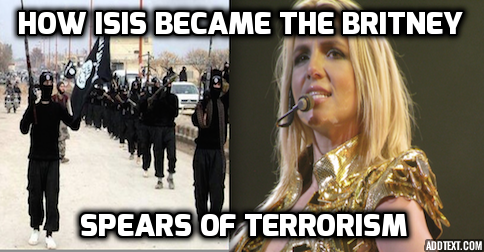
Pop Star Terrorism: ISIS and The New Breed of Terrorist
With slick marketing, a massive PR team, and enough money to rival celebrities and big corporations, ISIS has become the terrorist equivalent of such mega mass media personalities and conglomerations as Britney Spears, Inc or K-Mart. Don’t want to believe it? Well, just think about it. Most people know that the celebrity system is just that – a system. Once you reach, say, a Beyonce or Madonna “level”, you are no longer a human being, you are a corporation, a well-oiled machine. Behind you and behind the scenes, hundreds, sometimes thousands of people are working as hard as they can to make you, the star, look and be as perfect as can be. You are a cash cow and these people rely on your success. And how, you may ask, does this have anything to do with ISIS? Well, a lot, actually, and that may or may not be a good thing.
In this day and age, we have grown accustomed to living (for the most part) a decent existence (you are reading this on a computer presumably using the internet, yes?) where terrorists are shaggy looking, angry, dirty men with torn clothes and unwashed hair who live in caves and small villages in war-ravaged lands millions of miles away. We live our lives, go to our jobs, and come home to watch the war go on “over there” on the news, the experience not much different from watching a horror movie. The terrorists we have become accustomed to are crazy tyrants, religious fanatics, or power hungry people fighting against nations much bigger than them. Until now.

BYPASS THE CENSORS
Sign up to get unfiltered news delivered straight to your inbox.
You can unsubscribe any time. By subscribing you agree to our Terms of Use
Turning Terrorism Into A Brand
Even the name alone conjures up images of ancient Egypt, goddesses, pyramids, and ancient myths. According to Wikipedia, the goddess Isis, “Was worshipped as the ideal mother and wife as well as the patroness of nature and magic. She was the friend of slaves, sinners, artisans and the downtrodden, but she also listened to the prayers of the wealthy, maidens, aristocrats and rulers.” Ironic, huh? Ah, but as with most brands, irony is a big part of marketing – and the terrorist group that shares it’s name with the goddess has a marketing team to rival the best marketing companies in the entire world (but more on that later).

So, where did ISIS come from? This seems to be the question on most people’s minds. This horrific terrorist organization, with it’s hundreds of millions of dollars, massive violence, and slick flags and symbols seems to have just appeared out of nowhere. It’s not true, but it’s exactly what they want you to believe. It’s also not the easiest question to answer, but, in short, ISIS is Al Qaeda…. 2.0 – new and improved… but it’s also not at all. Confused yet? Keep reading.
ISIS, in many ways, is the terrorist equivalent of the classic Julia Roberts character Vivian Ward in the Hollywood movie, Pretty Woman. For those of you who have not seen the movie, Richard Gere plays Edward Lewis, and, essentially takes Julia Roberts’ character from rags to riches overnight (think Cinderella, but with a hooker). According to the official description on IMDB.com, “A very successful, wealthy lawyer, Edward Lewis, hires a beautiful and unlikely prostitute, Vivian Ward (Julia Roberts), from Sunset Blvd to bring along to various business events. An attraction developes between the two, and Edward finds it harder and harder to let the infectious, kind-hearted Vivian go.”
Except in our version, the Julia Roberts character would realize now that she has been groomed and cleaned up by Richard Gere that she doesn’t need him. She dumps him and starts her own prostitute revival program and all the hookers who used to get hired by Richard Gere join up with her and against him. That’s exactly what happened, and ISIS is the prostitute.
This next statement is going to sound like it’s stuffed with irony, but, sadly, it’s not: Al Qaeda created a monster. According to a great article by VOX, “The Islamic State of Iraq and the Levant (ISIS) used to have a different name: al Qaeda in Iraq.
US troops and allied Sunni militias defeated al Qaeda in Iraq during the post-2006 “surge” — but it didn’t destroy them. The US commander in Iraq, General Ray Odierno, described the group in 2010 as down but “fundamentally the same.” In 2011, the group rebooted. ISIS successfully freed a number of prisoners held by the Iraqi government and, slowly but surely, began rebuilding their strength.
ISIS and al-Qaeda divorced in February 2014. “Over the years, there have been many signs that the relationship between al Qaeda Central (AQC) and the group’s strongest, most unruly franchise was strained,” Barack Mendelsohn, a political scientist at Haverford College, writes. Their relationship “had always been more a matter of mutual interests than of shared ideology.“
ISIS was a regional group with so many politics involved (as with most terror organizations), that it’s hard to keep them straight. One thing, however, is for sure: someone, somewhere along the line, high enough within the ranks of ISIS realized that terrorism needed a makeover. The face of terrorism was old, and they needed to evolve. Terrorism needed to be a brand.
The ISIS Backstory: The Stranger With A Dream
Before we delve deeper into why ISIS is making such a splash (horrific as it may be), and why their presence has grown so quickly, a little history lesson is necessary. In short, ISIS is a combination of two groups, according to the Counter Jihad report: “A non-al-Qaeda revival of the al-Qaeda-sponsored Islamic State of Iraq (ISI) organization that tried to take over western Iraq 2003—2006, and Sunni Syrian rebel groups including the Nusra Front (Jabhat al Nusra), which also has ties to al Qaeda.”
From there, not surprisingly, the real story gets hazy. In essence, here is the short version:
In 2003, at the beginning of the U.S. invasion of Iraq, a 36 year old Bin Laden loyalist from Jordan arrived in Iraq with deep pockets and big guns. He called himself “The Stranger”, and his group was called “Group for Monotheism and Holy War “. The goal of the group? To start a war in order to unite Sunni Muslims, primarily in the Middle East.
Large numbers of fighters came to stand with “The Stranger”, who would soon become known as Abu Mussab al-Zarqawi, and helped him to strengthen the group. They began to launch a literal slaughter against pretty much anyone who didn’t agree with their ideology. They were responsible for the bombing of the UN Headquarters in Baghdad which killed 36 people in 2003. Three years later, leader al-Zargawi was killed during a U.S. Airstrike, and Abu Omar al Baghdadi took over until he was killed in 2010.
Current leader of ISIS, Abu Bakr al Baghdadi
At the age of only 39, the current leader, Abu Bakr al Baghdadi, took the reigns of what we now know as ISIS. Because of the American presence in Iraq, around 2007 ISIS was pushed over the border into Syria. Now, remember that ISIS is a combination of two groups – one of them being the Nusra Front? Well, during the Syrian civil war in 2011-2012 Turkey, Qatar, and (though not entirely directly) the United States supported the Nusra Front even though it was on the U.S. list of terror organizations.
Well, the U.S supplied arms from Libya to Turkey meant to be for “moderate” Syrian rebels. Yeah, well, that didn’t happen and Qatar and Turkey gave massive amounts of weapons to radical jihadist groups. Nusra (who would go on to be one half of ISIS) received money and arms, even though the CIA was supposedly helping the Turkish government make sure everything was given to the “right” people (more on that later).
In a relatively small space of time, the group has evolved from, as The Counter Jihad Report put it: “The group has changed from an insurgency in Iraq to a jihadist group primarily in Syria, to an army largely in Iraq”. However, it’s also turned into one other thing: a massively powerful marketing machine.
Terrorism, Inc.: Oil, Wealth, and a PR Machine
Let’s talk about Britney Spears. No, I’m serious… But, not her music, or her dancing, or really her (as in the person) at all. Let’s talk about Britney Spears the corporation – we’ll call it Britney, Inc. Britney, Inc. is a pretty powerful organization and company with massive profits, millions and millions of devoted fans, and a publicity and marketing team so powerful, whether you like it or not, at some point in your week her name is mentioned around you. You feel like you know her every move. But, that’s a lie. You and I know nothing about the pretty pop star except what her team of people want us to know… but, it wasn’t always like that.
Let’s take a little journey back to 2006 and 2007. Britney Spears was on top of the world and everyone loved the sweet yet sexy girl from Louisiana. She was growing up and seemed to have everything. Then she got married in a surprise ceremony in Vegas which was annulled 48 hours later. Then she broke her hip and had to cancel her tour. Then she married again and got pregnant twice.
Then things really went careening downhill. It was like watching the Hindenburg explode. Britney fired her manager since childhood, Larry Rudolph. She fired her family. She shaved her head. She went C-R-A-Z-Y and attacked a car with an umbrella. Two rehab stints, an awful MTV performance, an unfortunate amount of crotch shots and drug rumors later it finally happened – Britney Spears melted down and had to go to be re-programmed a mental institute and more rehab. No one knew if Britney Spears would ever come back.
But, then the strangest thing ever happened: just 8 short months after this madness, her old manager was back, her father was put in charge of her life (and still is, as her ‘conservator’), she had a new album, looked incredible, and, if anything, gained more fans than ever before. Just look at the difference a year made:
What brought on this seemingly miraculous change? I-N-C-R-E-D-I-B-L-E marketing, one of the most aggressive PR campaigns of all time, and lots and lots and lots of money and support. Since then, she has sold millions and millions of new albums, continues to sell out tours and her residency in Las Vegas, and continues to have hit songs. A smart person would look at Britney as the ultimate image makeover of all time – and a really wise person wanting to do the same would study the formula used to re-invent Britney and master it and even make it better.
NOW, I AM IN NO WAY SAYING ISIS HAS EVER RESEARCHED BRITNEY SPEARS, AND I AM IN NO WAY MAKING A CLAIM THAT BRITNEY SPEARS HAS ANYTHING TO DO WITH ISIS.
What I am saying is, re-invention is the key to staying relevant, whether you are a celebrity or a company… or, perhaps, a terrorist army. To do this, you need a lot of money – a lot…. and ISIS possibly has more money than any terrorist group in history, according to CNN. The numbers vary, but they start around the $450,000,000.00 mark and, according to some sources, ISIS’ wealth may be 1.5 BILLION DOLLARS. They have taken over oil refineries and electric companies and are literally selling both products back to the Syrian government. To put their wealth into perspective, Al Qaeda was rumored to be worth around 70 million dollars.
A great article from Australian News sums it up pretty well: “ISIS: Slick PR, great wealth and strategies to rival any corporate machine”. They go on to say, “It’s wealthier than a small country, boasts a PR machine to rival the slickest Hollywood agency, and employs highly sophisticated strategies: what is this organization?” What the Australian News didn’t realize is, in that first line, they answered their own question: ISIS isn’t merely a horrific terrorist group run like anything we’ve seen before… because it’s run like a multi-national organization.
Most who are watching ISIS’ meteoric rise are floored by their use of PR tactics that do, indeed, rival many top ad agencies. According to the Australian News post, “(ISIS) conducts market research, produces merchandise including branded T-shirts and employs a tiered social media strategy to amplify its message.
Young radicals post to Twitter, Instagram, Facebook and Arabic Twitter app Dawn and are retweeted by larger groups, of which there are thousands on Twitter alone.
Lower in the hierarchy, ISIS militants often adopt a warm, casual tone, mixing selfies and cuddly animal shots with their darker message. As the level of importance increases, the tone becomes more corporate. ISIS produces a glossy magazine called Dabiq, produced in English and posted online.”
This horrific group have a command of media and marketing. What they have accomplished is right in front of everybody’s faces, yet no one has been brave enough to say it: ISIS gave Terrorism a makeover – and the tactic seems to be working. Just like Britney’s team was able to do in one year, ISIS has done the same – take a look:
On the left is a group photograph of members of the Al-Qaueda army, circa 2006/ On the right is the ISIS army, circa 2014
Mass Marketing Terrorism 2.0
ISIS has positioned itself well and they know who they are directing their communication at. ISIS is strategically targeting Muslims from around the globe who are young, between the ages of 20 and 30. ISIS plays on the emotions of young men who feel alienated in their own world and it offers itself as an alternative to world governments.
Through slick videos, including the recent one where ISIS’ captive American journalist James Foley is beheaded, and viral social marketing, more recruits are signing up everyday. According to the CFR blog, “(ISIS’) messaging to the wider global community, however gruesome to many viewers, serves largely to bind the militants of the Islamic State more tightly together—and rally more sympathetic Westerners to its cause. Both these functions rely almost exclusively on media platforms that were nonexistent a decade ago.”
Just a few years ago, ISIS had fewer than 1,000 members. Now, according to Medium, over 80,000 “fighters” have joined them from around the globe. It also is now larger than Al-Qaeda and other more (once) well known terror groups.
In an article for CampaignMe, the author discusses the video of James Foley, and writes, “The confrontation between the West and Islamic State (Isis) will, like all military campaigns, be influenced by who wins the propaganda war for hearts and minds, and Islamic State’s online army – dubbed ‘the new disseminators’ by radicalisation experts – are providing crucial backup to the brutal Isis operatives in the field,” wrote Mark Townsend and Toby Helm in The Observer. “Never before has a conflict been played out in real time to a global audience… The video’s deft editing and high production values cemented the credentials of Isis as a slick but shocking social media outfit, mixing barbaric content with a ‘jihadi cool’ aesthetic.”
The same article goes on to say, “The Twitter accounts of these men flaunted guns and tanks and ammunition as their header photo. Their bios ran along lines such as “After reading endless history, I have decided that the only way the caliphate ship can move forward is on an ocean of blood and towards a mountain of skulls and limbs”. Other accounts complimented the murderer of James Foley on his skill with the knife, and blessed him. Comments on the tweet made allusions to the fact that he was killed with the left hand and not the right hand. “He’s not worthy of being beheaded by a right hand,” responded another.
On and on went the social media terror. Threats to all Americans were made, civilians and otherwise. The worst part of the tweet was a gigantic smiley placed after calls for ethnic cleansing. Often times they use the very popular greeting for Arabs – Peace Be Upon You – and then in the next breath they call for executions. Their examples of heroes and myths and tales and moral lessons and fables are centuries old. They apply the same concepts, morals and encouragement to our issues in 2014 and their ‘enemy’, be it Obama or other Arabs. They call all Westerners ‘The Crusaders’, without knowing how little of Christianity is at the core of the US’s brutal government foreign policy. The ignorance is astounding, particularly when mixed with homicidal rage.”
ISIS doesn’t stop at tweets, shirts, or youtube clips or magazines – they even produce full length feature films. In June, they released one of the most horrific films (it’s essentially snuff), called “The Clanging of The Swords IV”. It’s gruesome and features horrible murders at the hands of ISIS. However, there is something else that is evident in the film: sophistication of camera work and editing. They use a drone to film overhead shots, the editors put in effects and there is an unsettling quality to it all.
As Stephen Marche from Esquire puts it: “This propaganda is nothing like the propaganda put forward by al-Qaeda or the viral poetry created by the Taliban fighters in Afghanistan. There are two distinctions. First of all, ISIS is much more technically competent. The Clanging of the Swords IV begins with an overhead shot of Fallujah taken by a camera attached to a drone. It also is remorselessly free of ideas, being purely concentrated on the visceral experience of murder.
Al-Qaeda’s propaganda was largely comprised of long, boring speeches from a gray-haired man hiding in a cave, interspersed with images of burning buildings. Terrorists have always shown their acts of violence — the murder of hostages, the beheadings of the violators of religious law — but not with such technical facility or with such aesthetic rigor and delight. This is mass murder in HD. ISIS’s propaganda is about faces that have been shot with the brains spilling onto the floor.”
This Islamic State propaganda image, circulated via social media, plays on the popular Call of Duty videogame franchise. It targets potential Western recruits. (Source: The Guardian)
ISIS has re-invented itself for the video-game generation. It has taken the old look, the outdated feel, and, most disturbingly, the distance once felt from terrorists and brought it right to your door in a sleek new package. Like Britney Spears and all great re-inventions before her, ISIS has given terrorism an evolution and delivered it to already desensitized young people with the promise of freedom and money, and glory. But the real question is – does ISIS have a chance? Does ISIS have any real power to do something drastic?
The Business of Terror
As Vox puts it: “Their (ISIS’) goal since being founded in 2004 has been remarkably consistent: found a hardline Sunni Islamic state. As General Ray Odierno puts it: “They want complete failure of the government in Iraq. They want to establish a caliphate in Iraq.” Even after ISIS split with al-Qaeda in February 2014 (in large part because ISIS was too brutal even for al-Qaeda), ISIS’ goal remained the same.
Today, ISIS holds a fair amount of territory in both Iraq and Syria — a mass roughly the size of Belgium. One ISIS map, from 2006, shows its ambitions stopping there — though interestingly overlapping a lot of oil fields:
Another shows their ambitions stretching across the Middle East, and some have apparently even included territory in North Africa:
Now, they have no chance of accomplishing any of these things in the foreseeable future. ISIS isn’t even strong enough to topple the Iraqi or Syrian governments at present. But these maps do tell us something important about ISIS: they’re incredibly ambitious, they think ahead, and they’re quite serious about their expansionist Islamist ideology.”
Let’s hope whoever wrote that last sentence is right, because ISIS seems almost strangely on top of things – too well put together. Esquire writes: “There is evidence that IS choreographed this social media strategy before its Iraqi offensive even began. In an historical first, the Islamic State even released an Arab-language Twitter app, intended to hijack user accounts and twist Twitter’s algorithms to its advantage. As IS roared toward Baghdad, a series of coordinated hashtag campaigns grabbed repeatedly for global attention. As author and social media analyst J.M. Berger noted, “This is a combination of an extremely ambitious military campaign with an extremely ambitious PR campaign. Social media is most of that PR campaign.”
But their control is stretching and growing by the day. According to ABC News, ISIS is making $3 million dollars or more per day from selling oil on the black market. That’s almost $100 MILLION dollars every month – just from that ONE source. They have also battled and taken control of power plants, where they are re-selling the power back to the government – essentially putting the government in a chokehold.
The governments of the U.K and the U.S seem to be in disagreement over how to handle the ISIS situation. The Hill reported today, “A pair of House lawmakers on Sunday clashed over the likelihood the Islamic State in Iraq and Syria (ISIS) would carry out an attack on the U.S. homeland. The debate comes after the Obama administration on Friday said the U.S. likely would not follow the United Kingdom in raising its terror alert level because of the threat posed by the militant group.”
Cleveland.com was more straightforward about the frustrations over ISIS being felt by many citizens: “President Barack Obama’s failure to articulate how the U.S. plans to crush the growing threat posed by rampaging Islamic militants has opened himself up to a swarm of backlash from critics, Erik Ortiz of NBC News reported, adding that it leaves glaring questions about American’s foreign policy.
During a news conference Thursday, Obama’s blunt admission that “we don’t have a strategy yet” landed with a thud, Ortiz reported — particularly after others in his administration have been ratcheting up calls to eradicate the Islamic State in Iraq and al-Sham, or ISIS, labeling the extremists as a “valueless evil.”
The president overtly played down the prospect of any imminent military action in Syria, Fox News reported. He tried to temper speculation he was about to roll out a “full scale” strategy, one that might expand the current, limited airstrike campaign in northern Iraq.”
Toxic Terrorism: The Occult, The Past, and The Unknown
Propaganda is defined by Oxford dictionary as: “chiefly DEROGATORY Information, especially of a biased or misleading nature, used to promote or publicize a particular political cause or point of view”. There is no doubt that most (if not all) information that comes out of ISIS is from not only a well-oiled marketing machine, but a well-oiled propaganda machine.
Historically, propaganda has been used to seduce millions of people into believing or doing something they may otherwise not. One of the best examples of the power of propaganda is Adolf Hitler and The Nazi Party. According to Wikipedia, “Propaganda was used by the Nazi Party in the years leading up to and during Adolf Hitler’s leadership of Germany (1933–1945). National Socialist propaganda provided a crucial instrument for acquiring and maintaining power, and for the implementation of their policies, including the pursuit of total war and the extermination of millions of people in the Holocaust.”
ISIS has technology to deliver propaganda on a scale Hitler could never have dreamt of – and that is a scary thing. Imagine if all of these channels of communication were available in Hitler’s time. It’s been debated by many people. Would it have prevented Hitler’s rise or magnified it? Barclay T. Blair brilliantly poses the same question on his blog. The answer is: we just don’t know… and, unfortunately, right now, we don’t know about ISIS, either. I’m not inferring ISIS is just like the Nazi party, though there are some striking resemblance. The two most glaring being the one we have covered in this article, and the other is both groups’ fascination with the occult.
In a fascinating piece, author Zen Gardner writes on her site: “It’s important to know that almost every portrayal of a feminine goddess, a specialty of Freemasonic art, literature and architecture, hails back to Isis, no matter whether it’s called “The Statue of Liberty”, “Blind Justice”, “Mother Mary”, “Columbia” or some other “Queen of Heaven” or whatever label they want to give her. They’re almost all the same entity. Isis in turn goes back to Sumer and the goddess Semiramis, or Ishtar, an embodiment of this same esoteric deity.
She was/is considered the goddess of enchantment and magic. Married to her brother Osiris, the two of whom then gave birth to the infamous Horus, all major characters in the play, she wandered looking for the dismembered penis of her former husband “wailing and moaning like the wind”. Hence the world “crown capitals” of Washington DC, the City of London and the Vatican all boasting phallic obelisks in this memory, as well as many other major financial and political energy centers.”
Another interesting thought is that, rather than ISIS fulfilling biblical prophecy is the notion that, as with many other aspects of their operations, they are just playing the religious groups of the world like a fiddle. Rather than them being some embodiment of a religious prophecy, as many have stated, could it be they have modeled their image and MO after the prophecy? The answer is yes, and it is more likely that, like all marketing and PR – it’s all an illusion.
Illusion in media is a dangerously powerful and tricky thing. It’s mostly smoke and mirrors. As idiotic as it will sound to some, when Britney Spears had her meltdown, she let the whole world in on a fiercely guarded secret: what we see of people, organizations, etc in the public eye is an illusion. She broke down before Facebook was available to the public and YouTube was just being born. As much as things like Instagram, Twitter, and Facebook would have allowed her to tell us more, that is mere speculation.
It is interesting to note that once she was back under the thumb of a massive team, in 2008, Twitter, Facebook, and YouTube had begun to really find their footing – and we lost any possibility of knowing what really, really happened to Britney. Perhaps it doesn’t matter, because she reminded us that all it takes is money and marketing to force us to forget a little girl who was (and possibly still is) miserable, sad, and lost. Social media and her incredible marketing team showed us a revamped Britney Spears – shiny, clean, new, and ready for a new generation of fans.
ISIS clearly made it a number one priority to do the same. They took the ugly, old image of terrorism and shined it up with flags, sleek uniforms and a revamped image of what it could mean to be a terrorist. They, of course, don’t hide the gruesome nature of what they do, they promote it. But that makes us wonder… is ISIS hiding an even uglier truth – that behind the curtain, it’s all just smoke and mirrors?
Latest posts by Royce Christyn (see all)
- Irish Slaves – What The History Books Will Never Tell You - November 1, 2017
- Government Op Who Predicted Super Bowl Score Warns Of Nuclear War - February 18, 2017
- Video: Why Voting Doesn’t Change Anything & Democracy Is A Lie - May 7, 2016




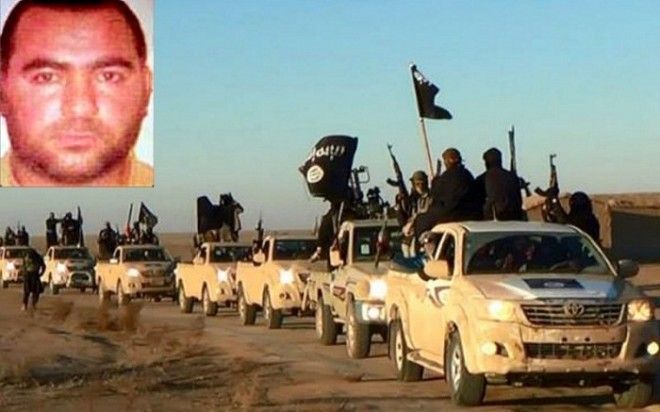
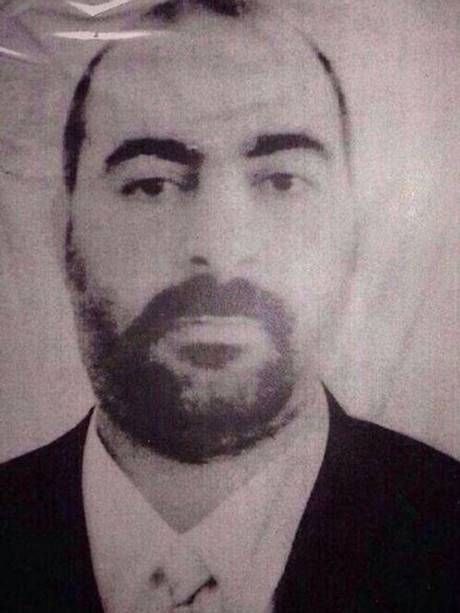




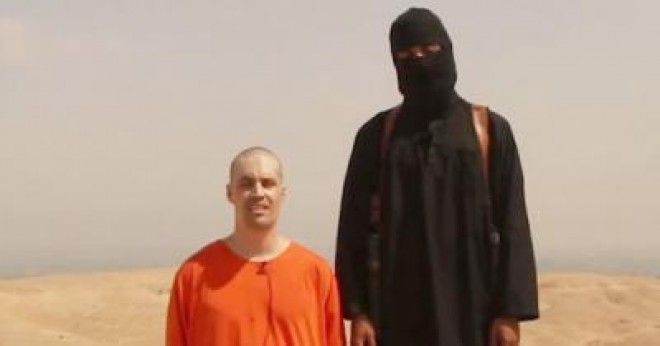

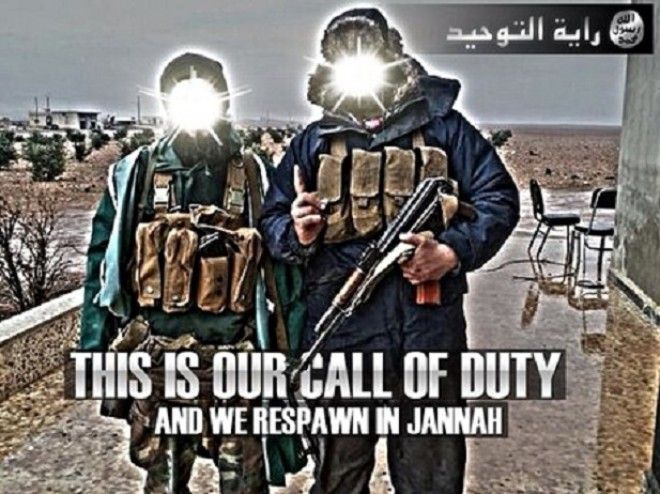





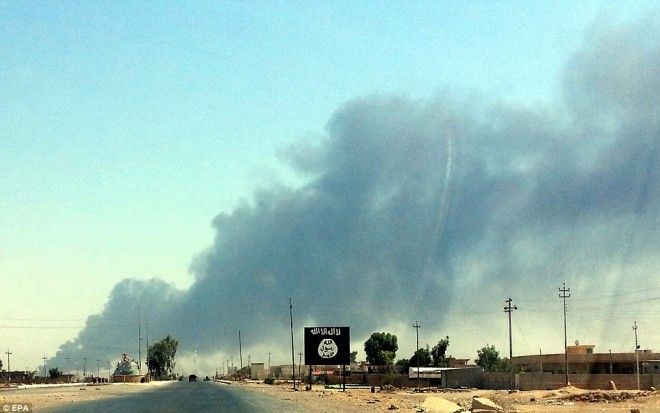
Be the first to comment